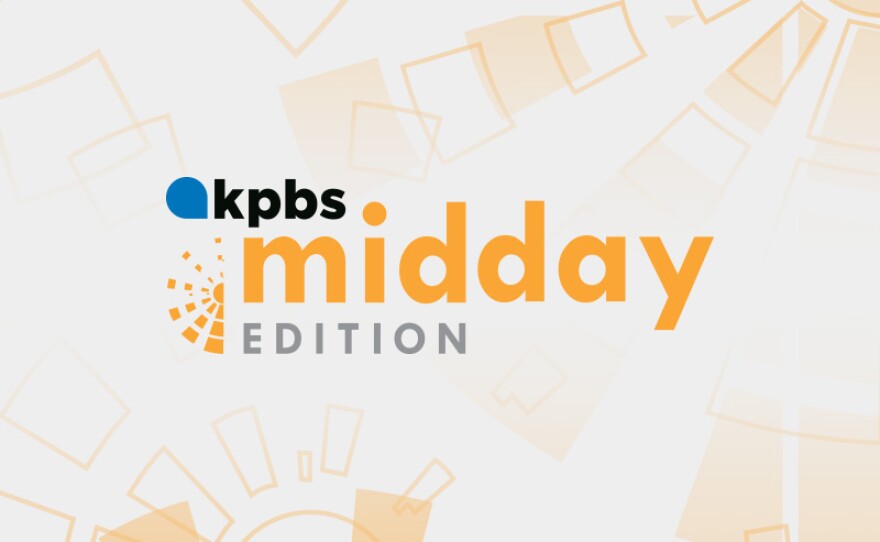San Diego Schools With Both Academic And Covid Disparities Face Reopening Dilemma
Speaker 1: 00:00 For schools in Southern San Diego County hit hardest by the pandemic. A public health crisis has collided with academic disparities, KPBS education reporter, Joe Hong spoke to teachers, administrators, and medical experts about how students who most urgently need in-person learning could be the last to return to the classroom. Speaker 2: 00:20 Natalie, the Rose is a teacher at Smith elementary in San Ysidro. She's currently juggling raising two children while being a full time teacher and the president of the San Ysidro school districts, teachers union Speaker 3: 00:30 It's very stressful. Speaker 2: 00:33 Distance learning has been a struggle for LaRoza. She said she's always struggled with technology. And she said, she spends nearly as much time preparing lessons as she does teaching. Although her life would be much easier. She and her kids could go back to the classroom. She says, it's not worth the safety risk of going back to school while COVID-19 case numbers are still high in San Ysidro. Speaker 3: 00:51 My students' parents have told me they've had it. Um, I know a lot of people will tell me that somebody close to them died from it. Even people in their forties that were healthy people that are in their sixties. So people are starting to know more people. And once you know, somebody that passed away from it, then it's more real to you. Speaker 2: 01:12 As of September 2nd, the zip code where she teaches has had over 4,800 cases of COVID that's more than 10 times. The number of cases in parts of coastal North County, others, zip codes in South County also I've had thousands of cases, but while return to school would be more dangerous for families in these zip codes compared to elsewhere in the County, their children are the most likely to need in-person instruction. They're more likely to be English learners and come from low income families. Speaker 1: 01:36 One recognizes that there are certain zip codes. Speaker 3: 01:38 That's where people reside, where, where the disease is far more prevalent. Speaker 2: 01:44 Howard terrace is a professor of pediatrics at UC San Diego and the consulting pediatrician for San Diego unified school district, San Diego unified with more than 125,000 students is the county's largest districts and span zip codes with both some of the highest and lowest case numbers. But Tara said the disparities in case numbers by zip code might not show the full picture. Speaker 1: 02:06 People that live in those zip codes may go to schools outside of. Speaker 3: 02:11 So the importance of the zip code begins to become a little bit more muddled when it comes to how schools, Speaker 2: 02:19 But the public health disparities colliding with preexisting academic disparities shows an ongoing crisis as Angelica Hong Kong. She's an attorney focusing on educational equity at the civil rights law firm, public advocates, Speaker 3: 02:32 Mom, before this pandemic, we already knew that the zip code you lived in dictated often the quality of the education that you've received Speaker 2: 02:42 Consider scripts elementary in the Northern part of the city. As soon as zip code with among the Lowe's case numbers in the County, and just 15% of its students qualify for free or reduced price meals. Compare that to Porter elementary in Southeast San Diego, which is in a zip code with among the highest infection rates and 95% of its students are eligible for free or reduced price meals. Tara says there is a possible scenario where Porter has to shut down due to high case numbers while script stays open, Speaker 3: 03:08 Those conversations do come up, but it is a big worry for everybody. Um, schools will hopefully not be the place where the disease is going to be transmitted, or it will be hopefully a rare event where it's transmitted Speaker 2: 03:22 Vista elementary is another district with learning disparities and a disproportionately high number of COVID cases. Educators they're tried over the summer to mitigate the disparities by offering a two week virtual summer school session to vulnerable student groups. Matthew Tessier is an assistant superintendent in the district. Speaker 3: 03:38 We're able to engage the community and actually have cohorts of children working with teachers in a virtual setting to help mitigate that loss and accelerate the learning actually Speaker 2: 03:52 Experts like Hong Kong say that the state needs to better support districts like those in the Southern parts of San Diego County to battle both the public health and educational inequities, closing the digital divide by providing devices and wifi to all students is just one example. Speaker 3: 04:06 This pandemic gives us an opportunity to actually upgrade our educational system to meet 21st century needs. Joe Hong KPBS news.


